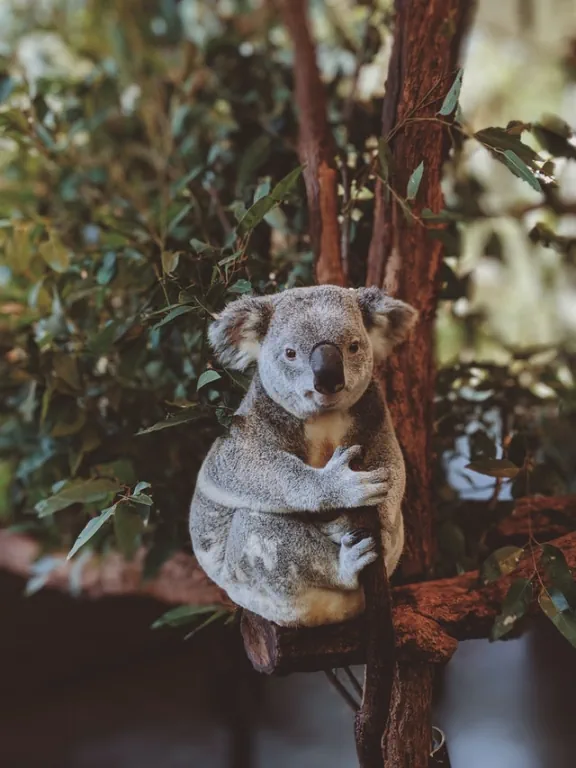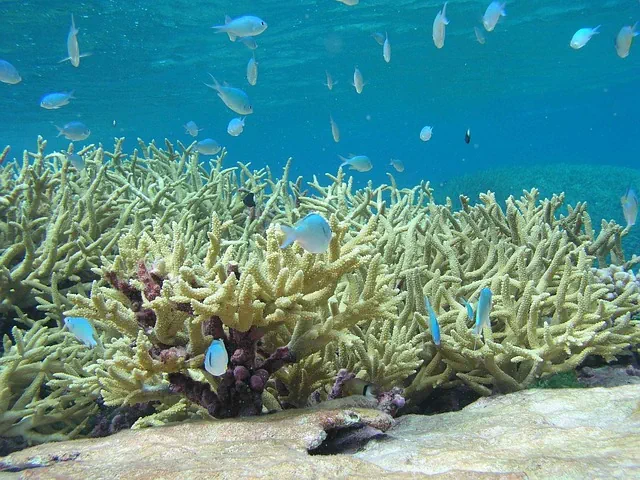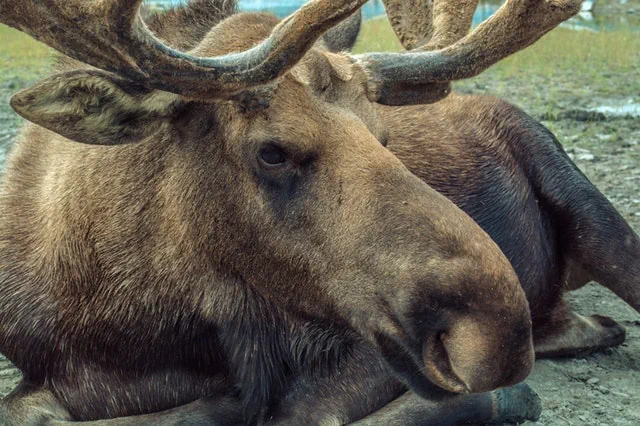
List of Animals Affected By Global Warming

Table of Contents
Global warming is one of the greatest challenges that we face today. We already see its adverse effects with water shortages, rising seas, catastrophic fires, and more. These events have a dramatic impact on diverse ecosystems and wildlife. So, unless we act fast, we could lose our animals to global warming within the next few years.
What is Global Warming?
The term ‘global warming’ refers to the increase in temperatures across the world.
NOAA and NASA data show that 2016 was the world’s hottest year. The average global temperature then was 0.99 degrees Celsius (1.78 degrees F). It suggests that the average has increased by close to 0.8 degrees Celsius (1.4 degrees Fahrenheit) over the past century.
Let’s see what causes this unfortunate increase in global temperature. If you have heard about the greenhouse effect, you already have some clue since it refers to the same thing. In simple terms, when air pollutants, including carbon dioxide and greenhouse gases, absorb solar radiation and sunlight that have bounced off the earth’s surface, global warming occurs. Ordinarily, the radiation needs to escape into space. Nonetheless, since the pollutants last for several hundreds of years in the atmosphere, they trap the heat and make the earth hotter for a long period.
How Does Global Warming Affect Animals?
Global warming directly affects both plants and animals. Due to the high temperatures, many animals move to higher altitudes. Some of them leave the equator for the poles. The temperatures also lead to the extinction of plant species that thrive in cold weather. You may have seen some migratory insects and birds arriving in their summer nesting grounds earlier than before. Global warming is often the cause. Another major concern is that warmer temperatures create a suitable habitat for many disease-causing organisms. For example, some diseases that were traditionally confined to the tropical and subtropical areas are killing animals in new geographical zones due to this change.
Scientists are also concerned that it could increase lightning strikes and hurricanes. This is more of a projection of an increase in the number of animal deaths. According to a 2013 report, if we leave these and other global warming effects unchecked, approximately one-third of the animals we have today will disappear by 2080. Let’s now look at some of the animals at risk of extinction to see where we need to direct our efforts.
Animals Affected by Global Warming
Here are six of the animals that are at risk of extinction:
Columbia Spotted Frog

Columbia Spotted Frog - from Wiki Commons
Columbia spotted frog is known to be highly aquatic. The scientific name of this North American species is Rana luteiventris. These frogs are green to brown with spots, especially on their dorsal surfaces. They thrive well near permanent water bodies like marshes, lakes, slow-moving streams, and ponds.
Predators threaten the lives of Columbia spotted frogs. To be safe, they inhabit places with abundant low-growing vegetation with large submerged sections. They hardly venture out of these secure areas, except during breeding.
It is important to remember that Columbia spotted Frogs is:
- Highly aquatic
- Adults eat spiders, molluscs, insects, and crustaceans
- Larvae eat organic debris and algae
If we look at these bulleted points, we can see why global warming threatens the Columbia spotted frog. Increased water evaporation is causing a reduction in the number of permanent water bodies. This happening exposes these frogs to predators and kills the plants, insects, and animals they depend on.
What’s more, global warming facilitates the spread of dangerous disease-causing pathogens like the chytrid fungus that have reduced amphibians’ population across the world.
Polar Bear

Polar Bear - from Wiki Commons
Polar bears, also known as Ursus Maritimus in the scientific world, face an uncertain future, particularly due to the decreasing sea ice in their traditional habitat, the Arctic. As you most likely know, the heat melts ice. Climate change causes much of this animal’s habitat to become ice-free for extra-ordinarily long periods. This inhibits the bears from accessing seals, which are their primary prey.
Moreover, the destruction of the polar bear’s habitat means it has to forage on land most of the time, which puts them in conflict with humans. They are dangerous, and people often kill them in self-defense.
Some of the key aspects to remember about the polar bear are:
- Lives largely with the Arctic Circle
- Body characteristics adapted for colder temperatures
- Hunts seals for food on the edge of sea ice
- It has been classified as a vulnerable species
With these facts, I believe it is easier to see that global warming may cause polar bears to starve to death. The aggressive ones that choose to confront humans on land are likely to die in large numbers.
Ringed Seals

Ringed Seal - from Wiki Commons
Ringed seals (Pusa hispida) are adaptive on the Arctic sea ice. They are the main source of food for polar bears. These animals hardly come on land.
The change in global temperatures is warming spring temperatures. It is also responsible for the prevalent premature sea ice breakup. These two events cause nursing pups to separate from their mothers before they are ready to fend for themselves. Moreover, it is responsible for the forced migration of these animals to stable ice habitats.
Warmer ocean temperatures also create the best habitat for ringed-seal parasites.
Key facts about ringed seals that you need to keep at the back of your mind include:
- It’s the smallest seal species
- Have a thick fat layer
- Pups dive at a very tender age
- Feed on crustaceans and fishes
- Native Arctic peoples frequently hunt for it
- Rely on the sea for survival
- Melting causes many parts of the ocean to be accessible by humans and other predators
Ringed seals are small but safer in the sea. Global warming can expose them to great danger. Humans and polar bears kill the pups before they mature. The old ones also lack feed and easily die. At the same time, melting exposes previously inaccessible places to activities such as oil explorations and shipping means the changes destroy the animal’s habitat.
The Koala

The Koala - from Valeriia Miller
The Koala, also called Phascolarctos Cinereus, is one of the iconic fluffy marsupials. It has a special diet, which is the eucalyptus leaves. The increasing pollution of the atmosphere is reducing these leaves’ nutritional value.
Global warming is also exposing these leaves to destruction. We have witnessed an increase in bushfires.
They are clearing these plants as well as the bush-dwelling animals like the Koalas. The bushfires and longer, persistent droughts force Koalas to descend from the tall eucalyptus trees searching for new habitats and water. This exposes them to road traffic and predators. Remember, they don’t drink much water. The name ‘koala’ is derived from the Aborigine language meaning ’no water.’ So, the leaves provide almost all their water needs.
More facts about the Koala that likely needs your attention are:
- Sleeps almost 18 hours per day on the top of tall trees
- Have small brains
- Survives on eucalyptus leaves
- Smell eucalyptus
The Koala spends most of its lifetime sleeping, likely due to the reduced nutritional value of eucalyptus leaves. Remember that it only depends on these for food. For that matter, if global warming continues, and we fail to act in time, these animals will most likely disappear from the face of the earth before long.
Staghorn Coral

Staghorn Coral - from Pixabay
Staghorn Coral’s scientific name is Acropora Cevicornis. It appears on the IUCN Red List as a critically endangered species. Since the 1970s, its population has declined by more than 80%.
This coral looks like plants but is a threatened animal. It is vulnerable to bleaching. The plant-like animal has a symbiotic relationship with zooxanthellae, single-celled algae that inhabits the polyp tissues.
The algae manufacture their food through photosynthesis and then pass some of them to the animal. Staghorn corals also depend on some microscopic animals for food. They wait for these animals to come to them and then use stinging cells to catch them.
Some interesting facts about these animals are:
- Often mistaken to be a plant
- They are among the fastest-growing corals
- Can live for centuries
- Starve due to too much warmth
Global warming remains the main threat to staghorn corals. When the sea temperature rises, the animal expels its zooxanthellae through the process we have called bleaching. When this happens, it loses its primary nutrient source. The animals are also extremely vulnerable to hurricanes and other similar weather-related events.
Moose

Moose - from Pixabay
Moose (Alces alces) are striking in appearance, particularly due to their towering size. They belong to the deer family.
Due to their body size, these animals require a habitat with lots of edible plants such as shrubs, young trees, and pond grasses. Moreover, they need protection from extreme weather and cover from predators.
If there is one thing you shouldn’t forget about moose, it is: Have high cold tolerance but poor heat tolerance
The heaviest and largest species in the dear family Due to this, global warming is expected to cause moose, which regards Canada and the US as home, to move farther towards the north. Since the increasing temperature causes the parasite population to boom, global warming can weaken the animal’s immunity and end many calves’ lives.
Wrap Up
Global warming has made life more difficult for these many animals, but we can find ways to change this. We depend on them directly and indirectly. We should continue reducing carbon emissions and do more towards supporting the ongoing animal conservation efforts.